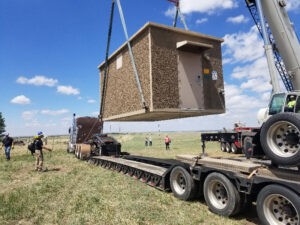The concept of “building in thin air” encapsulates the fascinating and complex challenge of constructing structures in environments with reduced Tower Climbing Services Colorado atmospheric pressure or low air density. This term can refer to both high-altitude projects on Earth and ambitious constructions in extraterrestrial or extreme environments. The ingenuity required for these feats pushes the boundaries of traditional engineering and architecture.

High-Altitude Challenges
Building in thin air on Earth typically involves high-altitude locations where the atmosphere is significantly less dense. Mountainous regions and elevated plateaus present a host of unique challenges. One of the primary issues is the reduced oxygen levels, which can lead to difficulties for construction workers. Lower oxygen levels can cause fatigue and altitude sickness, necessitating special precautions such as supplemental oxygen or adjustments to work schedules.
The lower atmospheric pressure at high altitudes also affects the behavior of construction materials. For example, the curing time of concrete and the drying of paint can be altered, requiring modifications in the mix and application techniques. Engineers must account for these factors to ensure the structural integrity and longevity of the buildings.
One prominent example of high-altitude construction is the development of observatories and research stations located on mountain peaks. The Mauna Kea Observatories in Hawaii, situated at nearly 14,000 feet above sea level, face harsh conditions including high winds, extreme temperatures, and reduced atmospheric pressure. Designing structures that can withstand these conditions while maintaining functionality is a testament to the advanced engineering involved in building in thin air.
Extraterrestrial Construction
Building in thin air also extends beyond Earth to the realm of space exploration and planetary colonization. The concept of constructing facilities on the Moon or Mars introduces an entirely new set of challenges. Unlike high-altitude Earth environments, space and planetary bodies lack a substantial atmosphere, presenting extreme conditions such as vacuum, radiation, and temperature variations.
The International Space Station (ISS) serves as a prime example of construction in a low-pressure environment. Located in low Earth orbit, the ISS must endure the vacuum of space and cosmic radiation while providing a habitable environment for astronauts. Its modular design allows for assembly in space, and its components are engineered to withstand the harsh conditions outside Earth’s atmosphere.
Future extraterrestrial construction projects will require materials and technologies that can handle the unique stresses of space. Innovations in shielding materials, thermal regulation, and structural integrity will be crucial for the success of building in such environments. For instance, lunar and Martian habitats might use regolith (soil) for construction, leveraging local materials to reduce the need for transporting resources from Earth.
Innovative Solutions
Building in thin air necessitates creative engineering solutions and adaptive techniques. From high-altitude projects on Earth to space-based construction, engineers must overcome significant obstacles. This includes developing specialized materials that perform well in low-pressure conditions, designing structures that can endure extreme temperatures and radiation, and ensuring the safety and comfort of occupants.
As humanity continues to explore new frontiers, the principles and innovations derived from building in thin air will play a crucial role in expanding our capabilities. Whether it’s constructing high-altitude research facilities or preparing for future space colonization, the challenges of building in extreme environments push the limits of what is possible and drive advancements in construction technology.
In conclusion, building in thin air is a testament to human ingenuity and resilience. The ability to design and construct in some of the most challenging environments on Earth and beyond reflects our quest to explore, innovate, and adapt. Each successful project not only advances our understanding of construction but also paves the way for future endeavors in the ever-expanding realm of extreme environments.